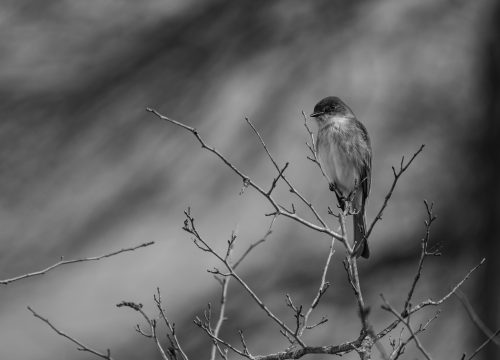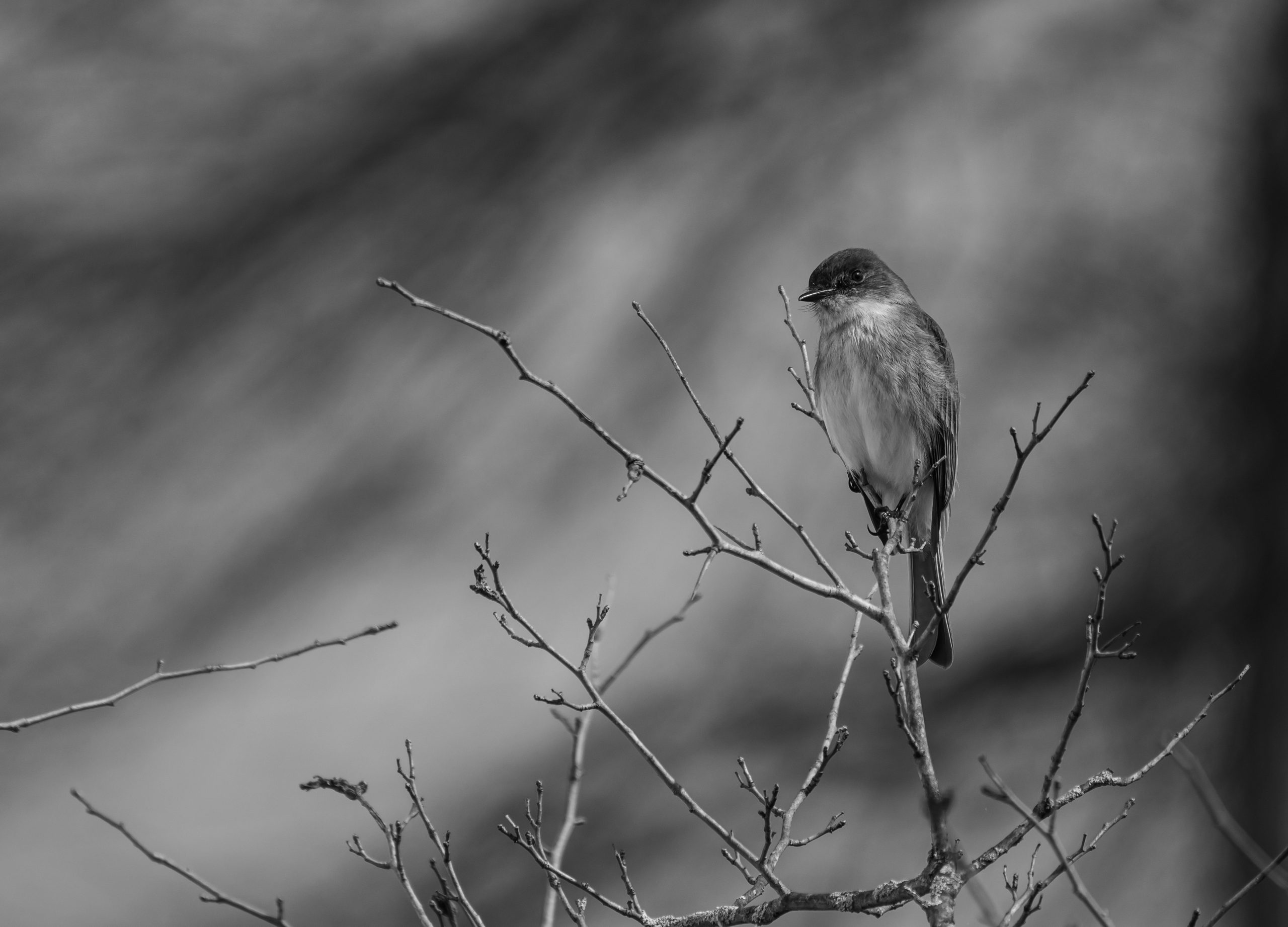Bird of the Week: Eastern Phoebe
About: A brown and white flycatcher with a slight yellow tinge to its belly feathers. It often can be distinguished by its “phoebe” call, but it can be confused with chickadees’ much sweeter, slower and less raspy “fee–bee” song. It frequently wags its tail from low perches as it sallies for insects.
Where to find this bird: It likes open areas with perches. The SLUG Garden and slightly open areas along the river are good spots to check for Eastern phoebes.
When to find this bird: April–October.
Fun fact: In 1804, the Eastern phoebe became the first banded bird in North America when John James Audubon attached a silvered thread to one so he could track its return in successive years to nest.

Martha, and other dead and dying birds
With habitat loss and climate change, extinction is a common topic in the birding world these days. I would like to look back at the extinction of Wisconsin birds to put these discussions in a historical context.
I will start by introducing you to Martha, who died at the Cincinnati Zoo on Sep. 1, 1914. She was the last known passenger pigeon. She died after spending four years alone in a 20 by 18 ft. cage at the Cincinnati Zoo after all the other remaining passenger pigeons died. Her body is now on display in the Smithsonian National Museum of Natural History.
What does this have to do with birding in Wisconsin? Well, passenger pigeons were once the most abundant bird in North America, with a population estimated between 3–5 billion birds. Reports of mega flocks that blocked out the sun were reported from the 1800s, which were estimated to contain 1–3 billion birds. They once bred extensively across Wisconsin and much of the northern Midwest and Northeast, and likely would have been one of the birds frequently found on campus 200 years ago, but one has not been seen in the state for over 100 years.
What caused the extinction of the passenger pigeon was a combination of rapid habitat loss because of deforestation and extreme hunting. Due to their very social lifestyle, population losses were exacerbated when an area’s population was reduced to only a few birds. The hunting of passenger pigeons was quite easy, as large flocks would fly low, making them easy targets to shoot at, and trappers created baited traps, where they could catch 800 or more birds at once. The birds would form dense flocks, and at times all hunters had to do was shoot aimlessly into the sky to take down birds. The last known nesting colony in Wisconsin was abandoned in 1887, likely due to frequent shooting at the breeding colony. The last colony of passenger pigeons was wiped out in 1888, with as many as 10 million birds slaughtered there that summer. Their populations plummeted in the 1880s and 1890s, and the last reliable wild specimen was taken in 1900. Captive birds remained until Martha’s death in 1914.
Other species now extinct that may have come through Wisconsin are the Carolina parakeet, which may have visited southern Wisconsin from time to time, though the extent is not quite clear; and the Northern curlew, which is technically considered critically endangered with no confirmed reports since 1963, though questionable reports have come from as recently as 2006. Carolina parakeets were the only native parrot species north of Texas and were well-adapted for cold winters. They were never well studied, and their population and range are poorly understood. The last known specimen of Carolina parakeet, named Incas, died at the Cincinnati Zoo on Feb. 21, 1918 in the same enclosure where Martha died; however, probable records of wild birds were reported until the 1930s. The cause of extinction for Carolina parakeets is not fully clear, though hunting likely played a role. Northern curlews, whose population was at least in the hundreds of thousands and possibly in the millions, were heavily hunted, which helped cause their extinction, but other factors such as pesticides and other contaminants/toxins likely contributed to their decline. While not declared extinct yet because not all means have been taken to locate this bird, which breeds in the remote tundra, it is likely that this bird, too, is extinct.
Today, hunting does not pose a large threat like it did in the past, but other factors such as habitat loss, pesticide use and climate change are causing many bird species to decline. Wisconsin hosts a number of endangered species, including the whooping crane and Kirtland’s warbler. If we do not take threats to birds seriously, we risk making other bird species mere memories.

